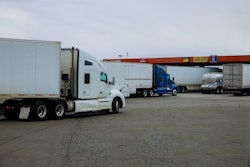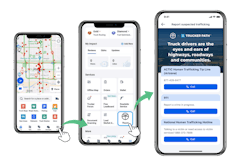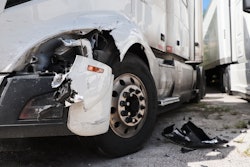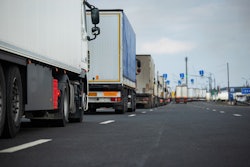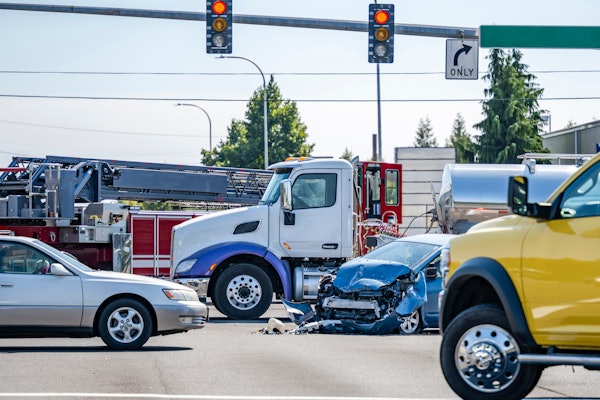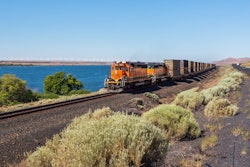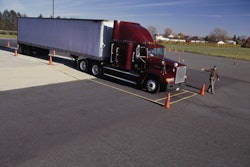There were more than 8,500 traffic fatalities in the first three months of this year, according to National Highway Traffic Safety Administration, and the number of post-pandemic accidents is higher than pre-pandemic.
"Our roads have become more dangerous than ever," said Motive's Vice President of Product Management Abhishek Gupta, speaking Sunday at an educational session at the American Trucking Associations Management Conference and Exhibition in Nashville.
Gupta said surveys show that 76% of business leaders want to use AI to gain visibility across their organization and 71% want to use generative AI, but only 25% are already using AI.
"There's a large opportunity gap that needs to be filled," said Gupta. "AI has a lot of power to transform your operations if done right."
AI is already being deployed across transportation for safety (identifying unsafe driving and collision detection platforms), profitability (fraud detection and route optimization) and productivity (customer support and AI-powered analytics).
"Of course, the public at large benefits from this, too," Gupta said.
Western Express Director of Safety Daniel Patterson is a user of Motive's AI dash cams and the Nashville-based carrier saw a 66% reduction of accidents, 182% more miles without an accident, 18% reduction in failure-to-obey violations, 50% reduction in seatbelt violations, and a 14% overall reduction in unsafe driving events.
Patterson said focusing on driver education before rollout was a critical first step, explaining what the technology does (and what it does not do), and why it was being deployed were all part of getting driver buy-in.
"If they didn't understand, we did see some (pushback)," he said. "Helping them understand there's not somebody watching them 24/7/365, and the camera is turned off when you're parked. And, that this is a coaching tool. We're not trying to use it in any other way."
Coaching is critical, he said, as that's what leads to behavior correction.
An AI dash cam processes images in near-real time, Gupta said, and those images are combined with telematics data – like speed and location – to determine if there has been an event. That information is sent to fleets via video and to drivers via alerts so they can self-correct immediately.
AI also enables blindspot monitoring and cargo theft monitoring.
"One of the advantages of AI is to identify when cargo is being loaded and unloaded, but also if someone unauthorized is in the trailer," Gupta said, or if cargo is being moved when it is not supposed to move. However, simply investing in AI is a folly if you don't know how to use it, Gupta said, and if your vendor can't support it.
"You want to make sure you have actual standard operating procedures for this technology," he said, adding those processes are important with what you're going to do with the data when you receive it.
When selecting a vendor, Gupta suggested fleets to verify the vendor using third-party testing and to get advice from other users.
"This is an investment in your business," he said. "You want to make sure this is going to work for yourself."
Noteworthy about AI technology, Gupta said, is the future is not yet here.
"The applications are endless," he said, naming automated transportation (like platooning and self-driving trucks); identifying when severe weather is happening and pivot routing; increase shipping efficiency; and there are multiple presently unknown use cases.




